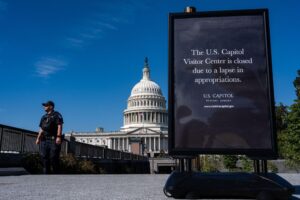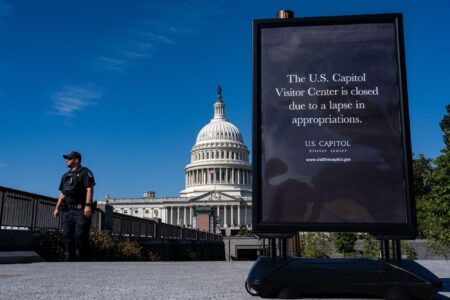How Age and Political Affiliation Influence Americans’ Political News Consumption
A recent analysis by the Pew Research Center sheds light on the diverse ways Americans access political news, revealing that both party loyalty and generational factors heavily dictate their preferred information sources. As the media ecosystem rapidly transforms, this study illustrates the growing segmentation in political news consumption, with Democrats, Republicans, and independents gravitating toward different outlets. Moreover, age-related preferences further complicate the landscape, emphasizing the fragmented nature of political information dissemination in the U.S. today.
Generational Preferences in Political News Sources
Distinct generational patterns emerge when examining how Americans consume political news. Younger adults, especially those aged 18 to 34, predominantly rely on digital channels such as social media platforms, news applications, and streaming services. These sources appeal to them due to their immediacy, interactive features, and the ability to engage with a variety of viewpoints in real time. For instance, platforms like Instagram, TikTok, and Twitter have become vital arenas for political discussion among younger voters, who prioritize accessibility and dynamic content over traditional formats.
In contrast, older generations—particularly those over 50—tend to favor conventional media outlets, including broadcast television, cable news, and print newspapers. This demographic values the depth, credibility, and familiarity offered by long-established news organizations and trusted anchors. The preference for detailed reporting and structured programming reflects a desire for comprehensive context and reliability, which these traditional sources provide.
- 18–34 years: Primarily social media, news apps, and streaming platforms
- 35–54 years: Combination of digital media and cable television
- 55 years and older: Broadcast TV, newspapers, and radio
| Age Range | Dominant News Medium | Common Political Affiliation |
|---|---|---|
| 18–34 | Social media, news apps | Democrats |
| 35–54 | Mixed digital and cable TV | Varied |
| 55+ | Broadcast TV, print newspapers | Republicans |
Political Party Influences on News Source Trust and Selection
Political identity plays a pivotal role in shaping Americans’ trust in and preference for news outlets. Democrats generally gravitate toward media organizations that emphasize investigative reporting and progressive perspectives, such as CNN and The New York Times. Conversely, Republicans often favor conservative-leaning sources like Fox News and talk radio programs, which align with their ideological views.
This partisan divide extends beyond mere preference, influencing perceptions of media credibility. According to recent surveys, only about 35% of Republican respondents express confidence in mainstream news organizations, whereas approximately 70% of Democrats report trusting these same outlets. This disparity fosters segmented audiences and reinforces echo chambers, where individuals predominantly consume information that confirms their existing beliefs.
| Political Affiliation | Primary News Outlet | Secondary News Outlet |
|---|---|---|
| Democrats | CNN | The New York Times |
| Republicans | Fox News | Talk Radio |
The Digital Shift Among Younger Audiences Versus Traditional Media Loyalty in Older Adults
The current media environment reveals a stark contrast between younger and older Americans in their political news consumption habits. Younger generations increasingly depend on digital platforms, including social media networks and mobile news applications, which offer rapid updates and interactive engagement. For example, TikTok’s rise as a source of political content among Gen Z illustrates this trend, where short-form videos provide digestible and shareable information.
Meanwhile, older adults maintain a strong allegiance to traditional media such as cable news channels, newspapers, and radio broadcasts. This group values the authoritative voices and comprehensive coverage these outlets provide, often preferring the structured format and in-depth analysis that come with established journalism. This generational divide presents a challenge for media companies aiming to engage a broad audience across age groups.
- Young adults (18–34): Social media, news apps, streaming services
- Middle-aged (35–54): Blend of digital and traditional TV news
- Older adults (55+): Cable TV, print newspapers, radio
| Age Group | Preferred News Platforms | Notable Features |
|---|---|---|
| 18–34 | Social media, apps | Immediate, interactive |
| 35–54 | Mixed digital and TV | Balanced consumption |
| 55+ | Cable, print, radio | Trusted, consistent |
Enhancing Media Literacy to Bridge the Political Information Gap
In an era marked by political polarization and fragmented media consumption, promoting media literacy is essential. Educators, community leaders, and policymakers should emphasize developing critical thinking skills that enable individuals to evaluate news sources critically and recognize bias or misinformation. Initiatives such as digital literacy workshops, public awareness campaigns, and interactive educational tools can help audiences understand how algorithms shape the news they encounter, thereby reducing the impact of echo chambers.
Addressing the information divide also requires tailored approaches that consider demographic differences. For example, younger audiences might benefit from programs that teach how to verify information on social media, while older adults could be encouraged to diversify their news sources beyond traditional outlets. Facilitating cross-generational dialogues and cross-platform educational efforts can foster mutual understanding and ensure that accurate, balanced political information reaches a wider spectrum of the population.
Summary: Navigating a Fragmented Political News Environment
The Pew Research Center’s findings highlight the profound influence of age and political affiliation on Americans’ political news consumption patterns. As the media landscape continues to diversify, understanding these distinctions is vital for news organizations, policymakers, and voters striving to engage effectively in the democratic process. With trust in media closely tied to political identity and generational preferences, the ongoing challenge lies in bridging divides and cultivating an informed electorate across all segments of society.







